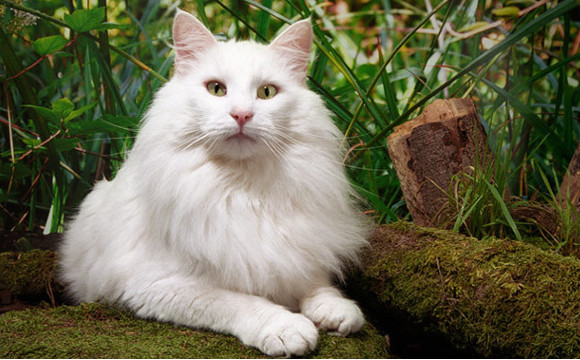Introduction
The Norwegian Forest Cat, also known as “skogkatt” in Norway, is a natural breed celebrated for its robust physique, dense coat, and affectionate nature. This guide delves into the history, characteristics, care needs, and overall appeal of this remarkable breed.
History
The origins of the Norwegian Forest Cat are deeply rooted in Norse history and mythology. These cats likely arrived in Norway from Europe, descendants of domestic cats introduced by the Romans. Norse mythology, particularly the Edda poems written between 800 A.D. and 1200 A.D., mentions large, longhaired cats, suggesting their presence in Norway for centuries. However, whether these myths refer to the Norwegian Forest Cat specifically remains debated.
When domestic cats first reached Norway, they were likely shorthaired. Over centuries, they adapted to the harsh climate, developing long, dense, water-resistant coats and hardy constitutions. These cats became adept hunters with sharp survival instincts, roaming the forests of Norway.
Formal recognition of the breed began in the 1930s, with the first Norwegian cat club founded in 1934 and the first Forest Cat exhibited in Oslo in 1938. However, World War II nearly led to their extinction. Serious breeding efforts resumed in the 1970s, preserving the breed’s distinct characteristics. The breed reached the United States in 1980, and by 1984, it gained championship status in TICA. Other cat associations soon followed, recognizing the breed’s unique traits.
Physical Characteristics
The Norwegian Forest Cat is known for its impressive size and robust build. Key physical features include:
- Coat: A dense, double-layered coat that varies in length with the seasons. The outer layer is water-resistant, while the undercoat provides insulation.
- Head: A triangular shape with a strong chin and a straight profile.
- Eyes: Large, almond-shaped eyes that can be various colors, often reflecting the cat’s playful and alert nature.
- Ears: Large and tufted, giving the cat a lynx-like appearance.
- Body: Muscular and athletic, built for climbing and hunting.
Personality and Temperament
Despite their wild appearance, Norwegian Forest Cats are known for their friendly and sociable nature. They are:
- Affectionate: They enjoy spending time with their human companions, often seeking out attention and cuddles.
- Playful: These cats retain their playful spirit well into adulthood, enjoying games and activities that challenge their agility and intelligence.
- Adaptable: They handle new people and situations with ease, making them ideal pets for families and households with other pets.
- Independent: While they love interaction, they also appreciate their independence, often exploring their environment with curiosity.
Care and Maintenance
Caring for a Norwegian Forest Cat involves regular grooming and attention to their physical and emotional needs:
- Grooming: Their thick coat requires regular brushing, especially during seasonal shedding periods in spring and fall. This helps prevent matting and reduces shedding around the house.
- Diet: A balanced diet is crucial for maintaining their health and energy levels. High-quality cat food, rich in protein, is recommended.
- Exercise: These natural athletes need plenty of exercise to keep them physically and mentally stimulated. Providing climbing trees, toys, and interactive play sessions will help meet their needs.
- Health: Regular veterinary check-ups are essential to monitor their health. Norwegian Forest Cats are generally healthy but can be prone to certain genetic conditions like hypertrophic cardiomyopathy.
Interaction with Children and Other Pets
Norwegian Forest Cats are excellent family pets. They are known for their gentle and tolerant nature, making them good companions for children. Their social disposition extends to other pets, including dogs, provided proper introductions are made. Their playful and friendly demeanor ensures they integrate well into multi-pet households.
Conclusion
The Norwegian Forest Cat is a captivating breed with a rich history and an array of endearing qualities. Their unique combination of independence and affection, coupled with their striking appearance, makes them a beloved choice for cat enthusiasts. Proper care, regular grooming, and a stimulating environment will ensure these majestic cats thrive in any home.

